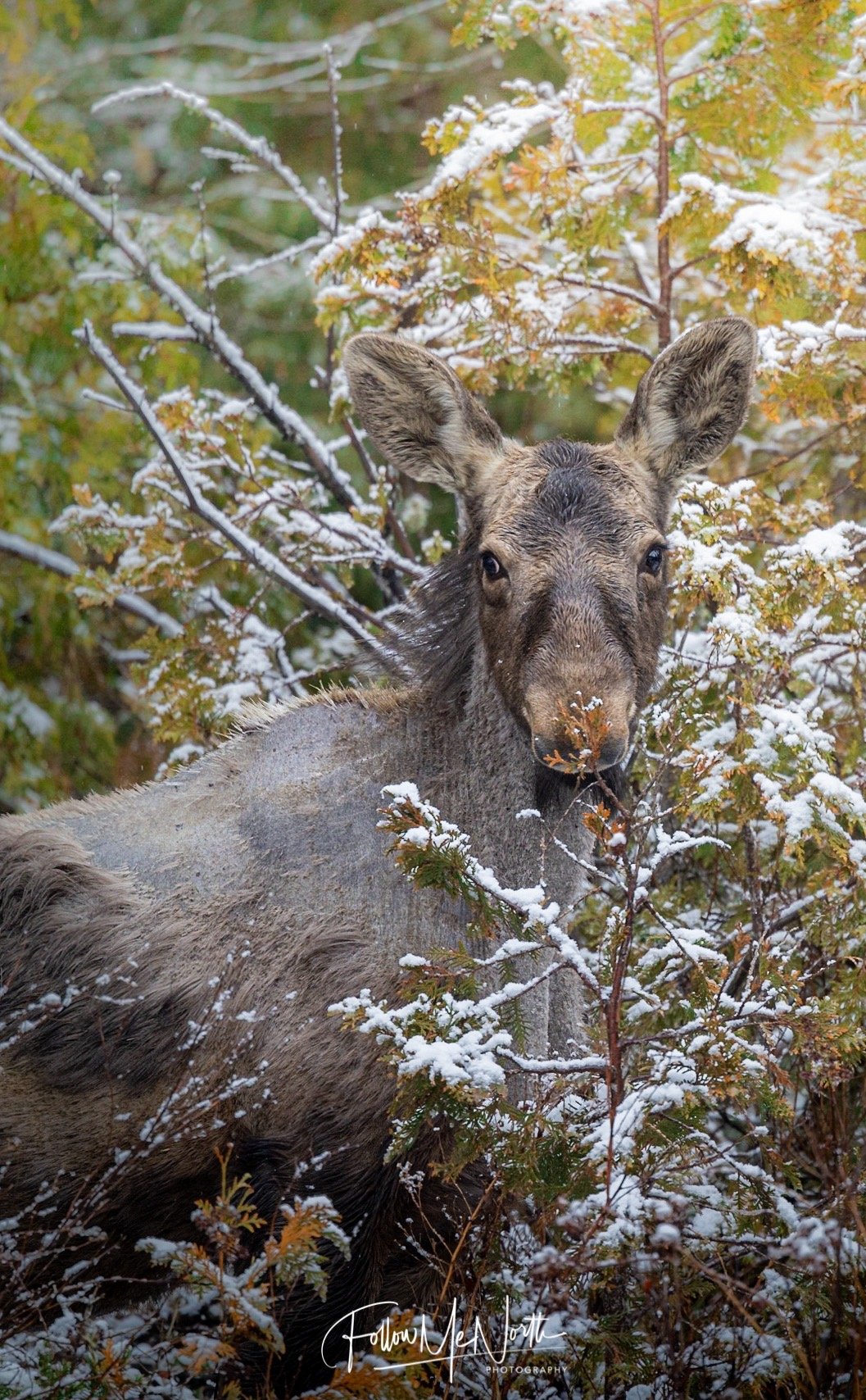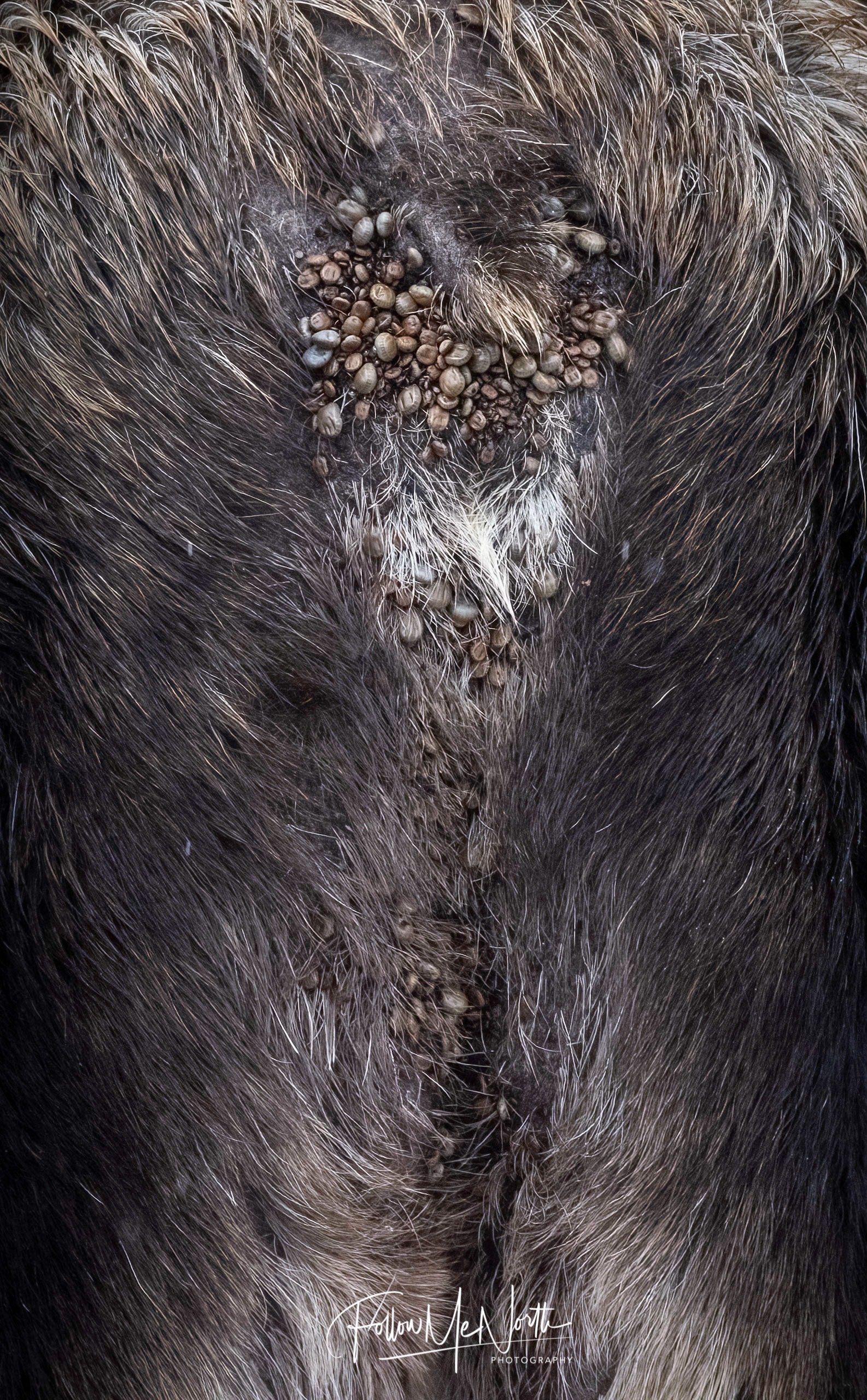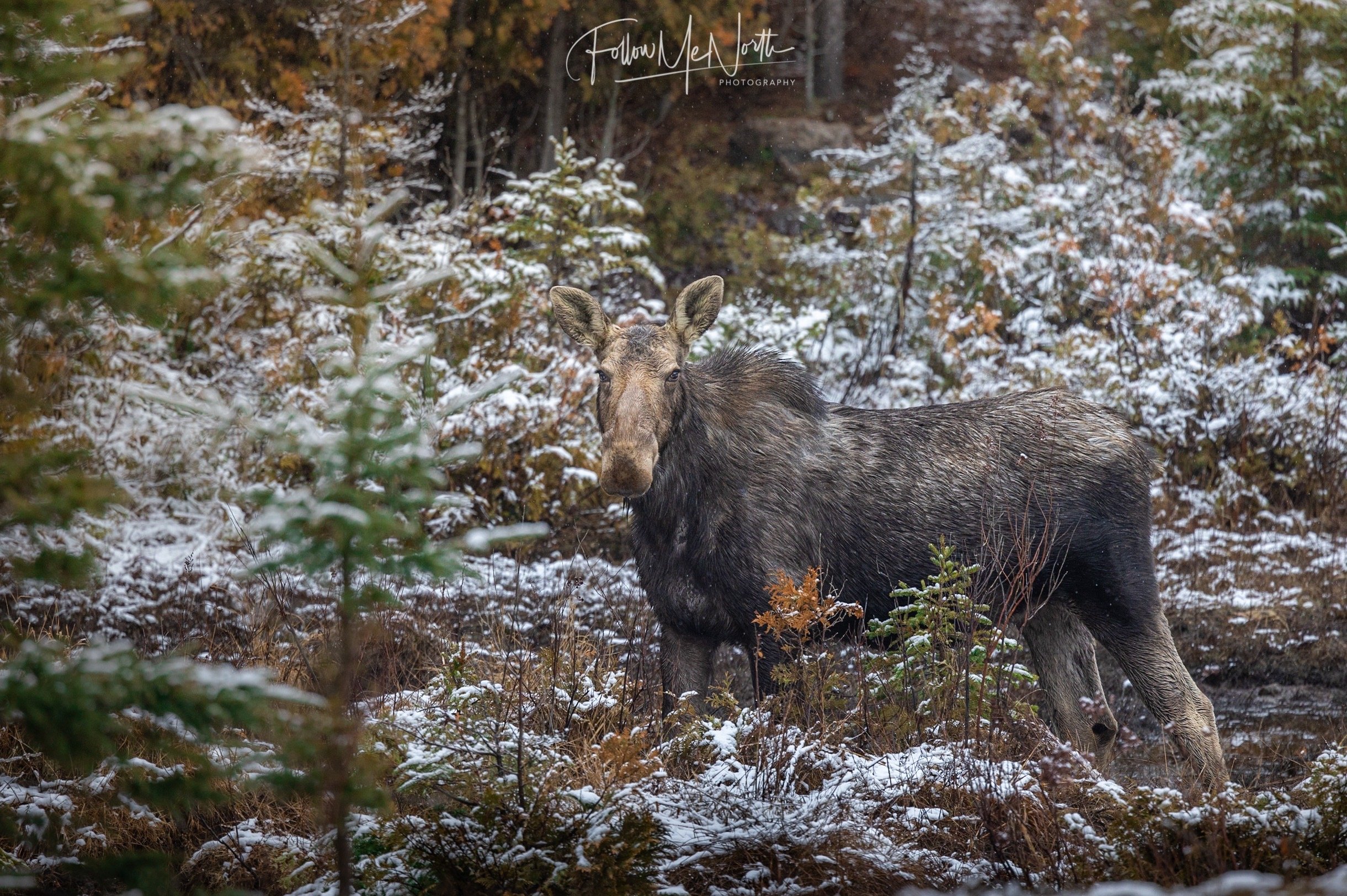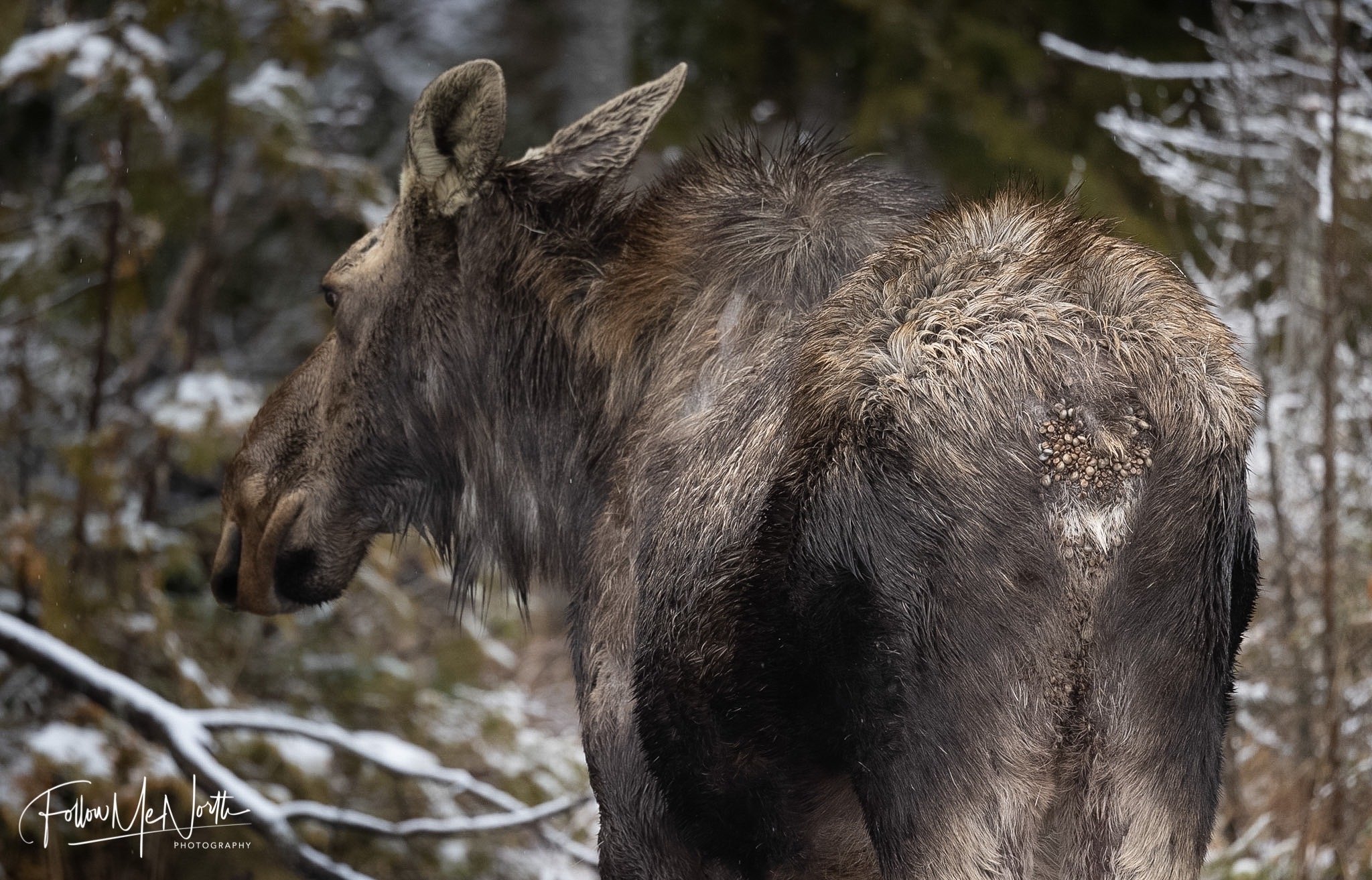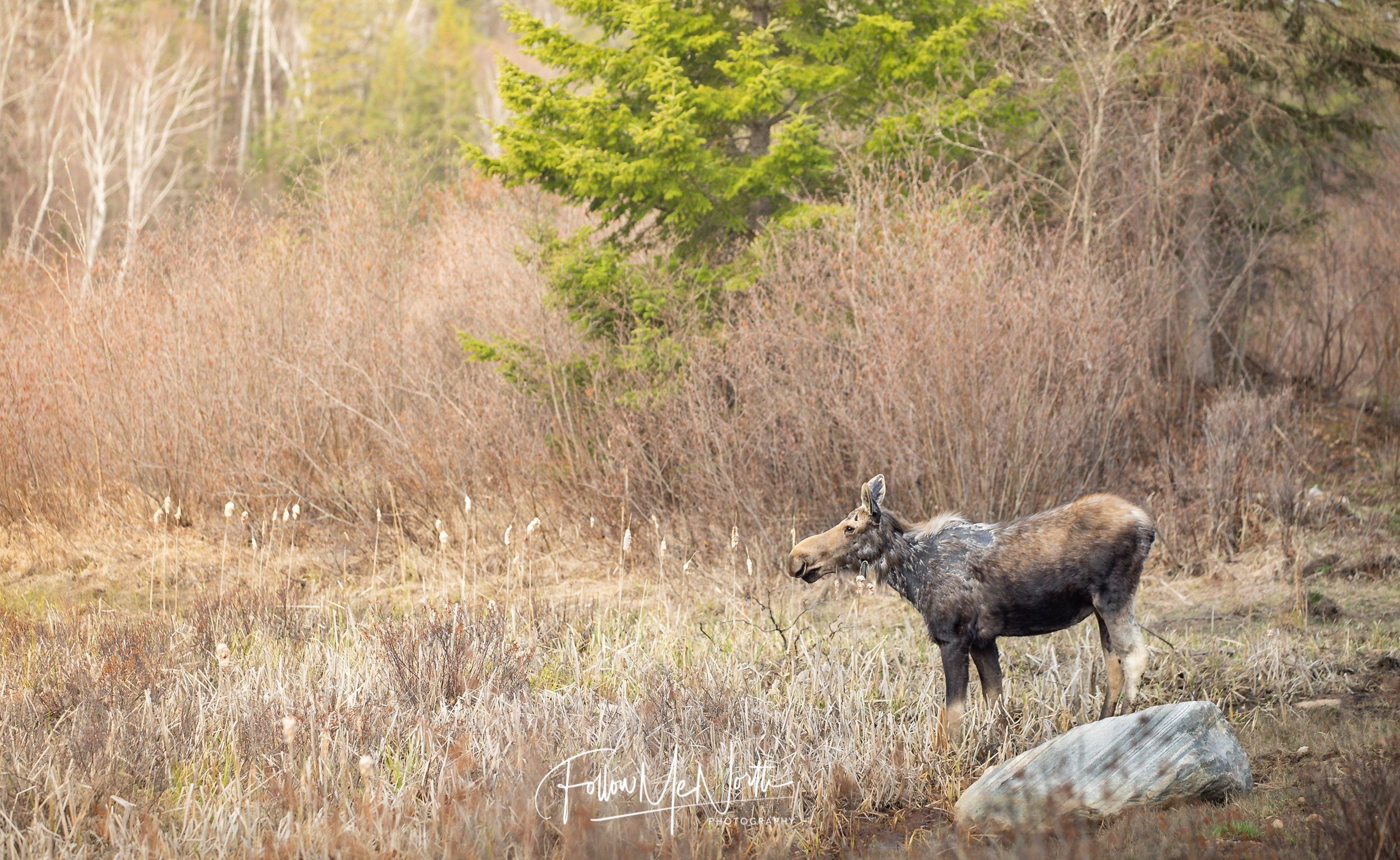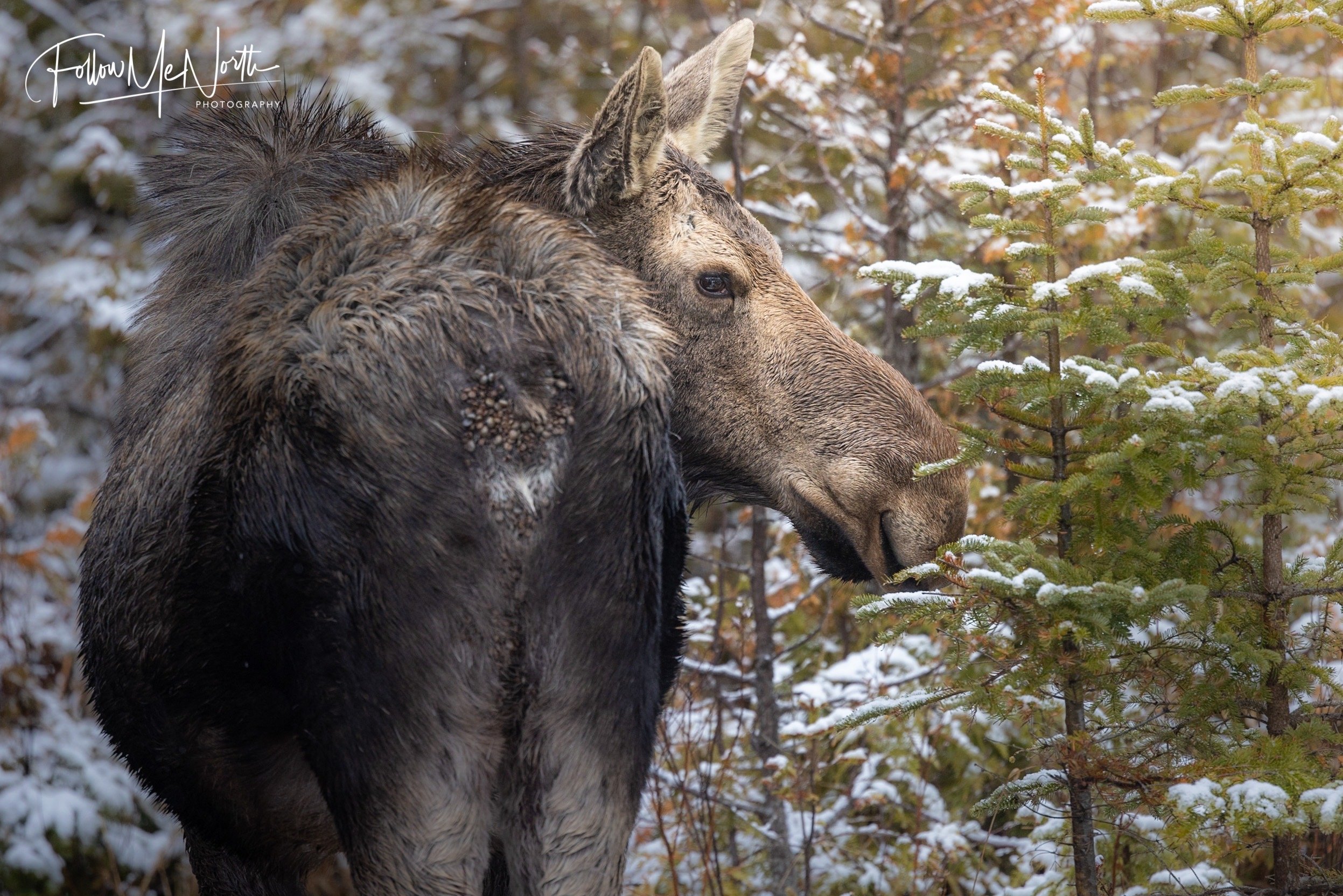Winter Ticks vs. Moose in Algonquin Park
What’s more irritating, black flies or Winter ticks?
If you’ve encountered a ghostly-looking Springtime moose in Algonquin Park, you may have asked yourself: “Why are the moose missing so much of their fur?” The short answer: Winter ticks.
Many biologists believe climate change is to blame for the sudden infestation of Winter ticks on moose, and after encountering our share of twig-eaters we have to agree. Shorter winters have created more favourable conditions for these blood-sucking parasites to flourish.
In 2017, biologist Josh Boulin found Ontario’s moose numbers fell by 20% and only 55% of moose calves are surviving their first 60 days. More disturbingly, less than half of these surviving calves are making it through their first Winter.
Now, when we’re talking about the “Winter tick,” we want to highlight that these suckers are a separate species from the deer and wood ticks we’ve come to know.
Unlike other species of ticks that jump from host to host a.k.a. the black-legged tick, Winter ticks grow from nymph to adult while hitching a ride on a single moose. Contrary to popular belief, Winter ticks don’t carry diseases that can be transmitted to humans and meat from infested animals is still fit for human consumption. Because Winter ticks favour a single host, lyme disease isn’t a concern for humans, however the tick’s 5-month ride can drain moose of enough blood to cause death.
The average moose carries over 30,000 ticks in the Winter. In some cases, mature moose have been found to have over 70,000 ticks! Think about that next time you complain about an annoying black fly.
The resulting moose fatalities are driven by anemia, fur loss, weight loss and infection. These Winter ticks irritate the flesh of the moose so much that they can rub so furiously against tree trunks their outer coats disappear, leaving them prone to hypothermia. Moose calves are particularly vulnerable, with each tick swelling to the size of a grape by late March.
Winter ticks mate on their host in April. Like salmon, these ticks die shortly after reproducing. In colder years, when April would still see snow scattering the ground, the survival rate of the tick eggs was low. However, now, when eggs are hatched onto wet, mild grounds, survival rate of the tick larvae is substantially higher.
Since 1984, biologists in Algonquin Park have been conducting aerial surveys in the Spring to assess the degree of hair loss in moose. The ministry acknowledges that an increase in logging, road-building, predation and hunting have also contributed to reduced habitat and reproduction rates of moose, but more studies need to be conducted to understand the full scope of this issue.
With these shocking statistics on the table, you may be asking, “What can I do to help?"
Ontario Parks suggests reporting your observations of Winter ticks through the iNaturalist app. Simply take a photo of the moose, identify or tag your photo with “Winter tick,” and describe the amount and areas of hair loss. The more visibility we can have on this issue, the closer we come to finding economical solution.
Print Resources:
CBC Canada
Canadian Wildlife Federation
The Atlantic
Ontario Parks
The Narwhal
Fishin’ Canada
Radio Canada International
Alces. A journal devoted to the biology and management of moose. Lakehead University School of Forestry, Thunder Bay, Ontario.
Banfield, A.W.F. 1974. The Mammals of Canada. University of Toronto Press, Toronto.
Chapman, J.A., and G.A. Feldhammer. 1982. Wild mammals of North America. Johns Hopkins University Press, Baltimore.
Hoshino, M. 1988. Moose. Chronicle Books, San Francisco.
Jones, H., Pekins, P., Kantar, L., Sidor, I., Ellingwood, D., Lichtenwalner, A., & O’Neal, M. (2019). Mortality assessment of moose (Alces alces) calves during successive years of winter tick (Dermacentor albipictus) epizootics in New Hampshire and Maine (USA). Canadian Journal of Zoology, 97(1), 22-30.
Patterson, B. R., Benson, J. F., Middel, K. R., Mills, K. J., Silver, A., & Obbard, M. E. (2013). Moose calf mortality in central Ontario, Canada. The Journal of wildlife management, 77(4), 832-841.
Samuel, W. M., & Welch, D. A. (1991). Winter ticks on moose and other ungulates: factors influencing their population size. Alces: A Journal Devoted to the Biology and Management of Moose, 27, 168-182.
van Wormer, J. 1972. The world of moose. J.B. Lipincott Co., New York.
Location: PO Box 45 Baysville PO Baysville, Ontario Canada P0B 1A0
Phone: (705)-242-6621
Instagram: https://www.instagram.com/followmenorth/
Website: https://www.followmenorth.com/
